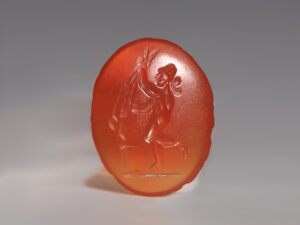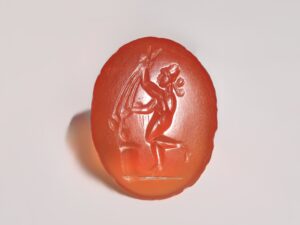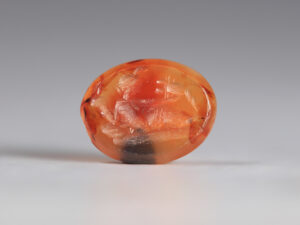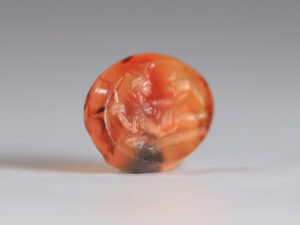The term intaglio refers to a small image that has been engraved into a gemstone and usually set in a piece of jewellery, most commonly a ring. Such artistic form has its origin in Sumer in the 4th millennium BC, with the appearance of cylinder and stamp seals, whereby decorations and patterns were engraved into soft stones. During the Hellenistic period and the early Roman Empire, the art of intaglio reached its apogee, with there being a steady decline in craftsmanship in the late Imperial Rome, until a revival of interest with the Byzantine and during the Renaissance.
Satyrs, in Ancient Greek and Roman mythology, were a form of a nature spirit who appeared as men with features akin to goats or horses. They were viewed as fertility spirits and were often depicted drinking, dancing and sometimes in erotic contexts. They were associated with Dionysus or Bacchus and are often shown as his companions in revelry and as members of his wine-infused entourage.
To discover more about Ancient Roman intaglios, please visit our relevant blog post: Engraved Gemstones in Ancient Rome


















